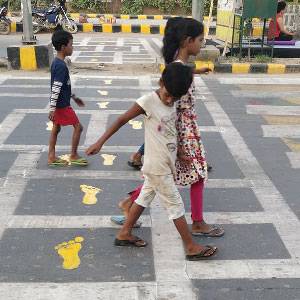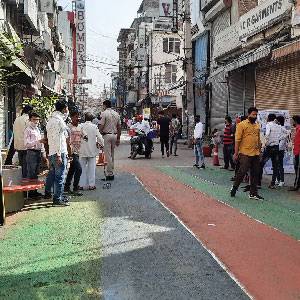Sustainable Mobility for India: The G20 Vision
In the next two decades, it is estimated that the percentage of individuals living in urban areas will increase to 70%, up from the current 50%. According to a 2020 report by the European Union, there is nearly one car for every two people. Although this is an average statistic, the trend of motorization continues to grow, with a 2019 survey showing that the total number of vehicles in India alone reached 295.8 million.
Given the unsustainable nature of traditional modes of transport and mobility, and their significant contribution to greenhouse gas emissions, it is essential to re-examine our approach if we are to take the theme of this year’s G-20 summit, “Vasudhaiva Kutumbakam or One Earth. One Family. One Future,” seriously.
The problem that arises is not only limited to traffic congestion. More cars and motorized vehicles means more air pollution, increase in the level of greenhouse gasses and greater health risk for people due to their prolonged exposure to the pollutants on the streets. Additionally, an aspect of automobile pollution that goes undiscussed is its carbon footprint throughout its life cycle. Automobiles leave behind a significant carbon footprint in their manufacturing and disposal process along with the tailpipe emissions.
Rethinking our transportation systems is not only an option but a necessity right now. To reduce greenhouse gas emissions from daily commutes, it is crucial to prioritize using public and non-motorized modes of transportation over private and motorized alternatives whenever possible. Studies indicate that creating safe, affordable, attractive communities and improving public transportation options, such as walking, cycling, and taking public transportation, can play a significant role in reducing the number of private vehicles and ultimately creating healthier and more sustainable metropolitan areas. By doing so, we can mitigate the negative impact that motorized vehicles have on the environment.
The benefits of using bicycles for personal health and the environment are widely recognized. Despite this, their use as a means of transportation is limited by safety concerns. Streets without designated bike lanes are not always safe for cyclists. To address this issue, there is a need for increased investment in sustainable mobility infrastructure and educational programs to reduce road accidents and make cycling a safer option, especially for children and students who are frequent users of bicycles. Policy makers must strive to create a more cyclist-friendly mobility network.
In addition to creating more bike-friendly streets, a study conducted by Rutgers University found that maintaining sidewalks along roads can play a significant role in reducing greenhouse gas emissions, cutting costs, and conserving energy, thereby mitigating the environmental impact of road construction. The study indicates that routine maintenance of pavement can decrease greenhouse gas emissions by up to 2%, transportation agencies can save between 10% and 30% in costs, and drivers may benefit from a 2% to 5% reduction in fuel consumption, tire wear, and vehicle maintenance expenses due to smoother road surfaces.
As noted by Mario J. Alves, the health of a democracy can be measured by the size and quality of its sidewalks. Despite clear guidelines set by the Indian Road Council regarding the construction and maintenance of sidewalks, finding an unobstructed and well-maintained sidewalk to walk on is a luxury in India.
Poor urban transportation design has only served to raise carbon emissions, which in turn has increased air pollution and noise levels, caused heat islands, reduced access to green places for exercise, and increased illness and even premature mortality. According to current reports, metropolitan areas consume between 60 and 80 percent of the world’s total final energy, and they also account for more than 70 percent of the world’s greenhouse gas emissions.
To accept that our old generation of road engineering is not equipped to implement new generational changes, is a hard pill to swallow. Nonetheless, it’s true. A well-designed transportation system can encourage the use of public transportation and active modes of transportation, such as walking and cycling, while reducing reliance on private vehicles. Research has shown that areas with a diverse range of land use, including a mix of residential, commercial, institutional, and workplace spaces, are more conducive to walking and cycling. Compact cities, characterized by high densities, diverse land use, and accessible destinations, as well as excellent last-mile connectivity to public transportation hubs, are prime examples of places that prioritize active transportation. One such city is Barcelona, Spain, which offers easy access to public transportation and short distances to its hubs.
The theme of this year’s G-20 summit, “Vasudhaiva Kutumbakam or One Earth. One Family. One Future,” emphasizes the need for inclusive and sustainable growth. The current state of transportation globally, however, poses a threat to both these principles. To achieve a more equitable and sustainable future, it is imperative that we reduce our reliance on motorized forms of transportation and shift towards sustainable options that are accessible to all, regardless of age, gender, or other social factors.
ALL CONTACTS
- C-157, Anand Vihar, Vikas Marg Extension, Delhi, India, 11009
- Office +91-8826865797
- raahgirifoundation@gmail.com
- Copyright All Rights Reserved : Raahgiri Foundation
- raahgirifoundation@gmail.com








